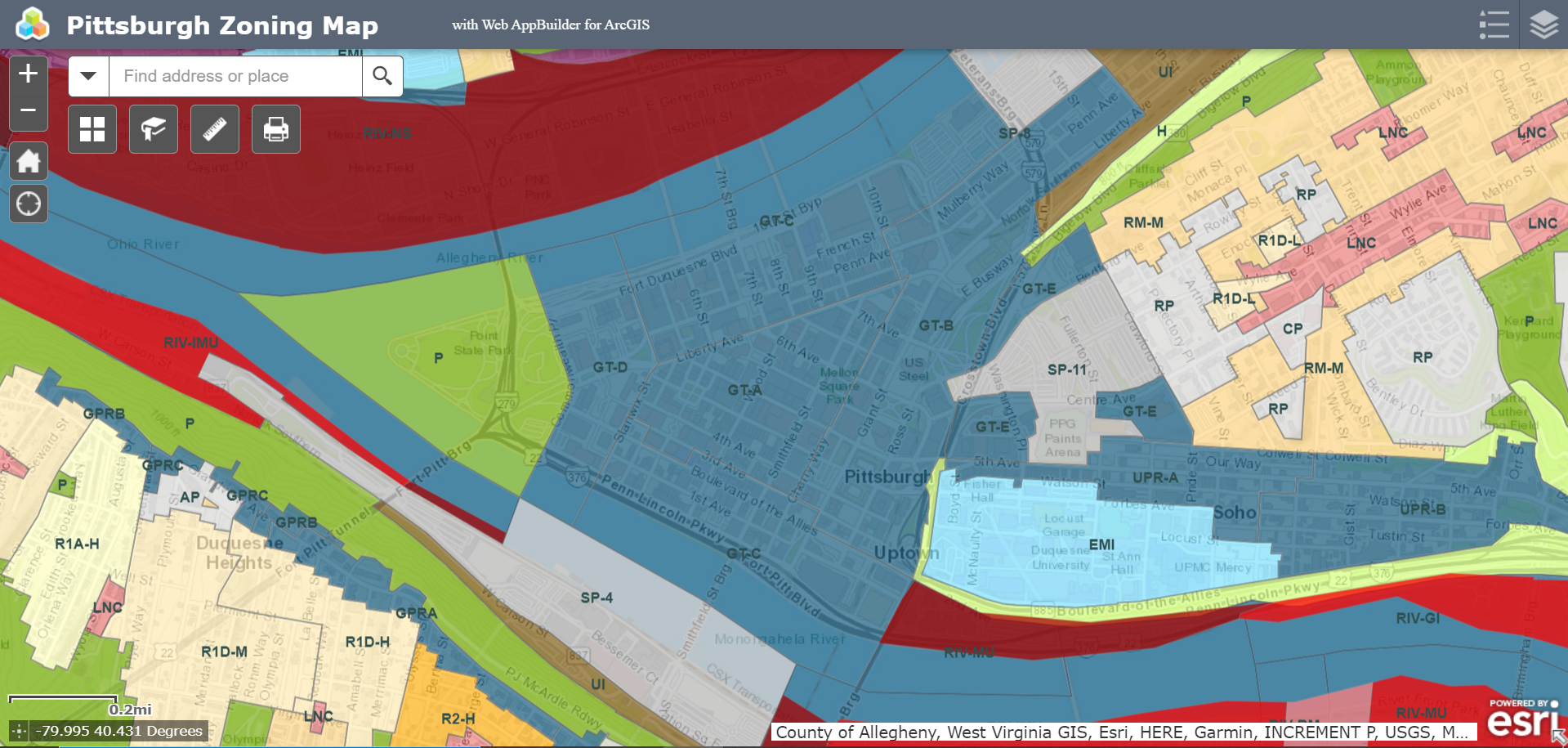Pittsburgh Zoning Districts - GT-B Overview
By Kathleen Oldrey
Introduction
Zoning districts are a fundamental building block of zoning regulations and set the base use, height, and density standards for the area they cover. In some cases, the district also sets the required level of zoning review. Pittsburgh has over 50 distinct mapped zoning districts. This series of guides is unpacking each of these districts.
In this post, we provide an overview of the GT-B (Golden Triangle Subdistrict B) zoning district. Additional posts dive into the density regulations for the GT-B and the use regulations for the full GT as well as provide an overview of the full GT and the other subdistricts: GT-A, GT-C, GT-D, and GT-E.
Refer to our Introduction to Pittsburgh’s Zoning Districts for the complete list of base zoning districts in the city. Pittsburgh’s interactive zoning map can be used to verify the project site’s zoning district.
Overview
The GT-B (Golden Triangle Subdistrict B) zoning district covers 0.18 square miles or 0.37% of Pittsburgh and is roughly bounded by Second Avenue, Cherry Way, 16th Street, Liberty Avenue, and I-579. It borders areas zoned GT-A, GT-C, SP-8, UI, H, P, GT-E, and SP-11.
Challenges
The GT-B subdistrict is subject to all regulations that apply to the Golden Triangle as a whole, including Project Development Plan review standards and open space requirements. The GT-B purpose statement describes office uses, a high-density urban form, and easy access to the GT-A’s retail-forward center; it also prioritizes working with the development site’s topographical and other physical features while taking into account views from nearby areas.
Much of the GT-B subdistrict falls within a Registered Community Organization (RCO) area; in this part of the subdistrict, the RCO process is required where review by Planning Commission is required. Very small portions of the GT-B subdistrict are within the Potential Steep Slopes Overlay Area and the Landslide Prone Overlay, and much of the GT-B subdistrict is located within the downtown Parking Reduction zone.
Conclusion
Depending on its scale and scope, development in the GT-B subdistrict may be subject to public processes and reviews beyond a simple basic review, including review by Planning Commission and the RCO process. Further information may also be required in response to any environmental overlays affecting the development site.

